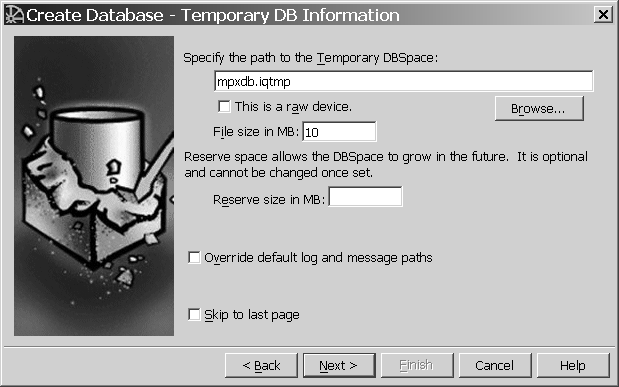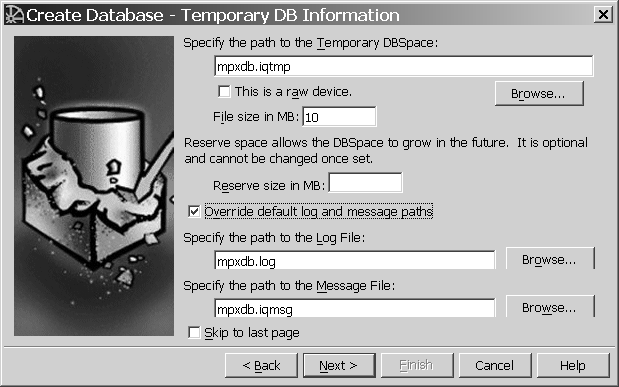The Temporary Store (dbspace) is the main temporary segment file containing the temporary tables generated by certain queries. Depending on your queries, this file may be very large. If you do not specify a path, it defaults to dbname.iqtmp in the same directory as your database file.
Accept the default or type the path for the temporary dbspace. Make sure that the temporary dbspace is local to the given host, not on a network drive. You can also add other dbspaces later.

If the temporary dbspace is not a raw device, type its size in the second box. (The default size is a function of the IQ Size.) For this tutorial, use 10MB.
If the temporary dbspace is a raw device, click the checkbox. The File Size box disappears in this case.
For this tutorial, leave the Reserve size blank. In general, the amount of Reserve space you allow depends on how much space your hardware supports. If the dbspace partition is a single disk, you should never need more reserve than the largest disk currently available. If the partition is on a disk array, the size of a single partition could be much large, since a disk array can have a single partition that uses many disks.
By default the message and log files are placed in the directory with the database file.
To accept the default log and message paths, leave the override box unchecked.
To specify a new location for the log and message files, check “Override default log and message paths.”
Type a new path for the log file, message file, or both. If the host is local, you may use the Browse button to choose the location if you prefer.

If you don’t plan to mirror the transaction log or disable Java classes and jConnect support, and plan to accept the default Sybase IQ database attributes and collation, click Skip to last page. Otherwise, click Next.
If you want to change any of the default database properties, do not click Skip.